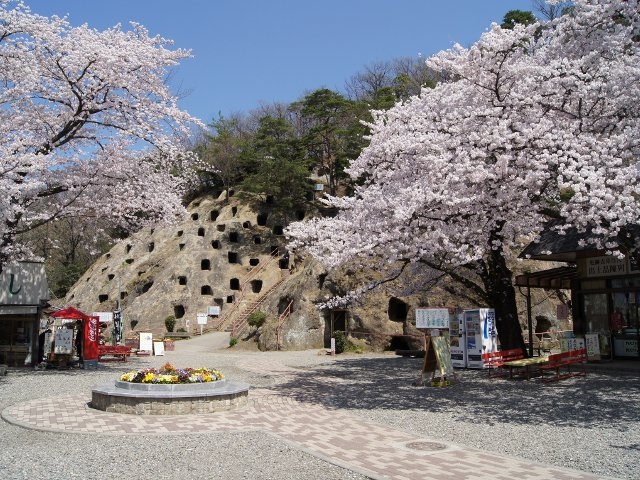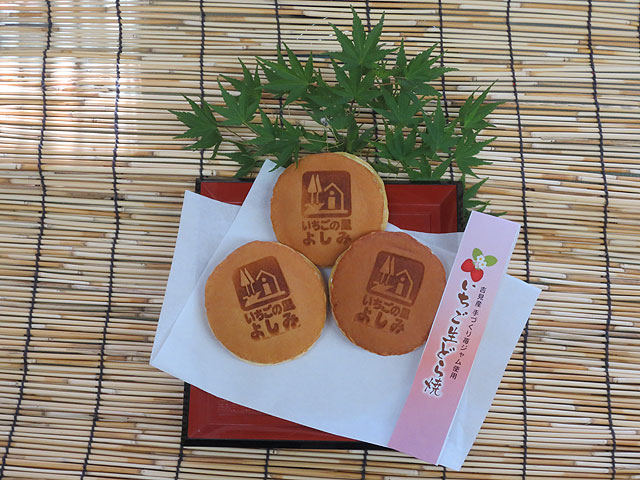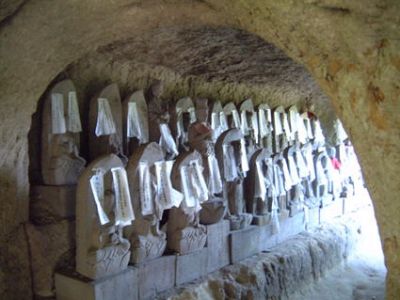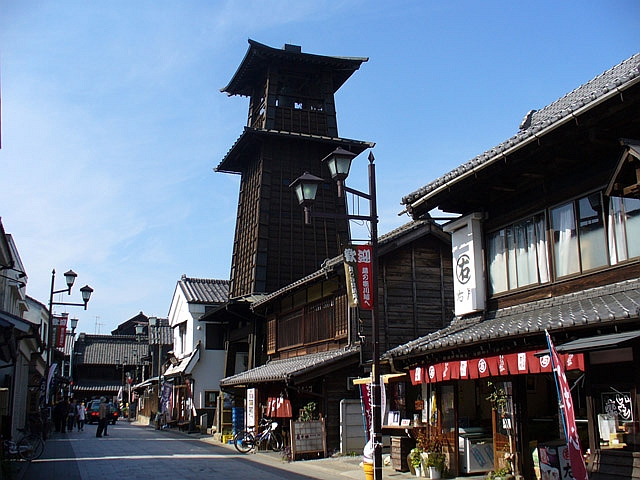
Yoshimi Hundred Holes
丘陵の斜面に無数の穴が開いた奇観で、百穴として古くから知られていた。明治20年(1887)からの発掘調査で古墳時代末期の横穴古墳群と判明し、大正12年(1923)に国の史跡に指定。現在穴は219確認されている、日本最大級の横穴古墳群だ。数カ所の穴には緑色の光りを放つヒカリゴケ(天然記念物)が見られる。構内の埋蔵文化財センターでは勾玉作りができ、子供たちに人気。
Info
Business Hours
Price
Spot Category

いちご生どら焼

いちごのしずくサイダー


いちごかりん糖
The information provided reflects the details available at the time of the survey.
Please note that facility details may change due to the facility’s circumstances, so please check for the latest information before visiting.
This content has been translated using machine translation.
Information provided by: JTB Publishing
The content uses an automatic translation service, which is not always accurate.
The translated content may be different from the original meaning, so please understand and use it.

丘陵の斜面に無数の穴が開いた奇観で、百穴として古くから知られていた。明治20年(1887)からの発掘調査で古墳時代末期の横穴古墳群と判明し、大正12年(1923)に国の史跡に指定。現在穴は219確認されている、日本最大級の横穴古墳群だ。数カ所の穴には緑色の光りを放つヒカリゴケ(天然記念物)が見られる。構内の埋蔵文化財センターでは勾玉作りができ、子供たちに人気。

吉見百穴への途中、松山城跡の北側にある。岩をくりぬき、88体の観音石仏を祭ったもので、弘仁年間(810~824年)に建立されたと言われる。その後、天正18年(1590)の松山城攻防戦の際に焼失。現在のお堂は江戸時代に再建されたもので、建物の後方には安産にご利益のある「胎内くぐり」や、四国八十八カ所めぐりと同じ功徳を得られるという石仏が祀られている。

Entoku 2nd year (1490) revisited, and Meiyo 2nd year (1493) by Hiromji II Tōyō Sakukata, it became Kaisan. The main temple is St. Kansei Ongobara. Enmei Jizo, the statue of Nioh is greeted. The kitchen in the main hall is highly valued as an arts and crafts, and the child's statue of Koyasu in the temple of the temple is inspired by safe-living and child-rearing. He is also known for his "Osuzuru-sama", which is said to be a substitute when stroking a painful part of his body. It is also the setting ground for anime movies.

Starting from Lake Kamikita in the town of Mōroyama, there are approximately 11km in total length and a 6-hour hiking trail for the healthy family, connecting Kitamou Jizo ~ Monomiyama ~ Hidaka City Takashiyama ~ Hiwadayama ~ Hiwadayama ~ Hiwadayama ~ Hiwadayama Pass ~ Iinono City. It was developed to allow you to enjoy the seasonal nature while walking slowly, passing through the forest of cedar and cypress, enjoying the coppice forest, the clear stream of the Koryo River, and the idyllic landscape of the countryside, leaving the remnants of Musashino, and walking by visiting the ancient shrine. The vantage from Mount Mono at an altitude of 375m is exceptional.

A wooden bell tower that stands on the street from the first city street into the bell. It was reportedly built by the owner of Kawagoe Castle, Tadakatsu Sakai, during the Kanei years (1624-44). It was converted at the order of Nobunaka Matsudaira in the second year (1653). The current tower, which is 16.2m high and built with a cypress, was rebuilt after the Great Fire of Meiji 26 (1893). It is an electric type and tells the time four times every day: 6 o'clock, 12 o'clock, 15 o'clock and 18 o'clock.
This website uses cookies so that we can provide you with the best user experience possible. Cookie information is stored in your browser and performs functions such as recognising you when you return to our website and helping our team to understand which sections of the website you find most interesting and useful.
Strictly Necessary Cookie should be enabled at all times so that we can save your preferences for cookie settings.
If you disable this cookie, we will not be able to save your preferences. This means that every time you visit this website you will need to enable or disable cookies again.
